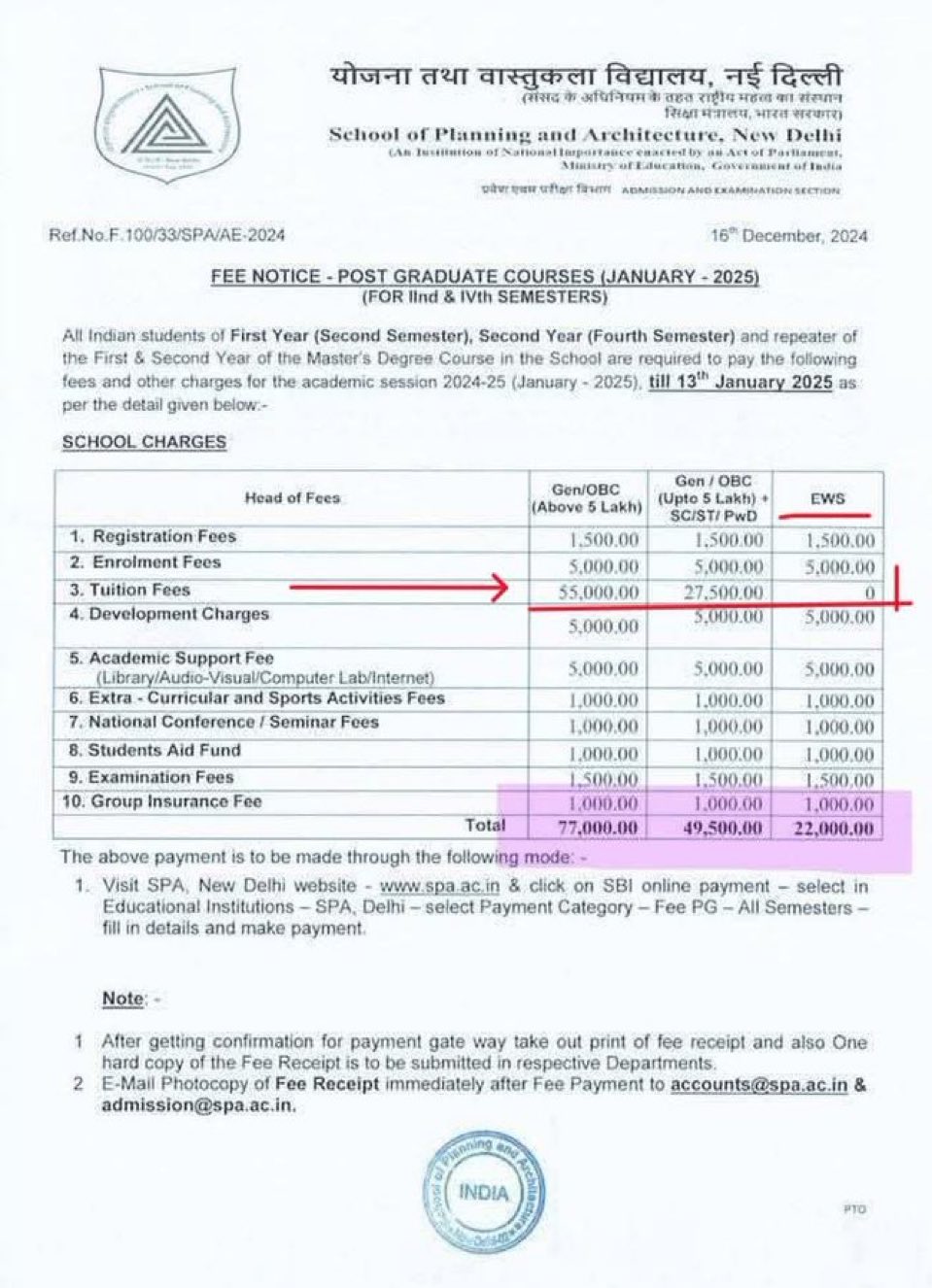Explore the tuition fee disparity at School of Planning and Architecture (SPA) Delhi. EWS students (income up to ₹8 lakh) pay zero, while OBC, SC, ST students still pay hefty fees. Is this real social justice?
Exposing Fee Discrimination at SPA Delhi: Why Are OBC, SC, ST Students Still Paying More?
India’s education system is built on the ideals of social equity and upliftment. However, recent developments at the School of Planning and Architecture (SPA), New Delhi, have triggered a fresh debate over the actual implementation of these ideals. At the center of this controversy lies the tuition fee policy which disproportionately favors the Economically Weaker Section (EWS) while ignoring the socio-economic realities of Other Backward Classes (OBC), Scheduled Castes (SC), and Scheduled Tribes (ST).
🔍 Tuition Fee Breakdown at SPA Delhi
| Category | Annual Family Income | Tuition Fee |
|---|---|---|
| EWS | Up to ₹8 lakh | ₹0 |
| OBC | Above ₹5 lakh | ₹55,000 |
| OBC/SC/ST | Up to ₹5 lakh | ₹27,500 |
While EWS students—often from general and upper caste categories—receive full exemption for income up to ₹8 lakh, students from the OBC, SC, and ST categories are not given the same benefit, even though they continue to face systemic barriers, social stigma, and generational poverty.
⚖️ Is This Social Justice or Policy Blindness?
Despite constitutional provisions for affirmative action, SPA Delhi’s policy seems to have flipped the script. How can a student from a Dalit or tribal community earning ₹4 lakh per annum pay ₹27,500, while a general category student earning ₹7.9 lakh pays zero? This glaring contradiction undermines the entire philosophy of reservation in India.
- Historical Marginalization Ignored: The policy assumes that income alone is the best metric of disadvantage, ignoring the deep-rooted caste discrimination faced by OBC/SC/ST students.
- Affirmative Action Undermined: The EWS quota, meant for the economically weak among forward castes, now enjoys better financial aid than constitutionally recognized backward groups.
🧠 The Broader Impact
The long-standing mission of enabling first-generation learners from marginalized communities is being compromised. SC/ST students, many of whom are still fighting social exclusion in rural areas and urban slums, now face an additional burden—the cost of education.
Furthermore, students from OBC families above ₹5 lakh income are seen as “creamy layer” even when they lack cultural and educational capital—while EWS students, who may belong to socially privileged backgrounds, are receiving full support.
📢 Policy Must Be Reassessed
This discriminatory fee structure needs urgent parliamentary intervention. Educational institutions like SPA must revise their models to account for both social and economic disadvantages. Fee waivers should reflect historical injustice along with income metrics, not replace it.



